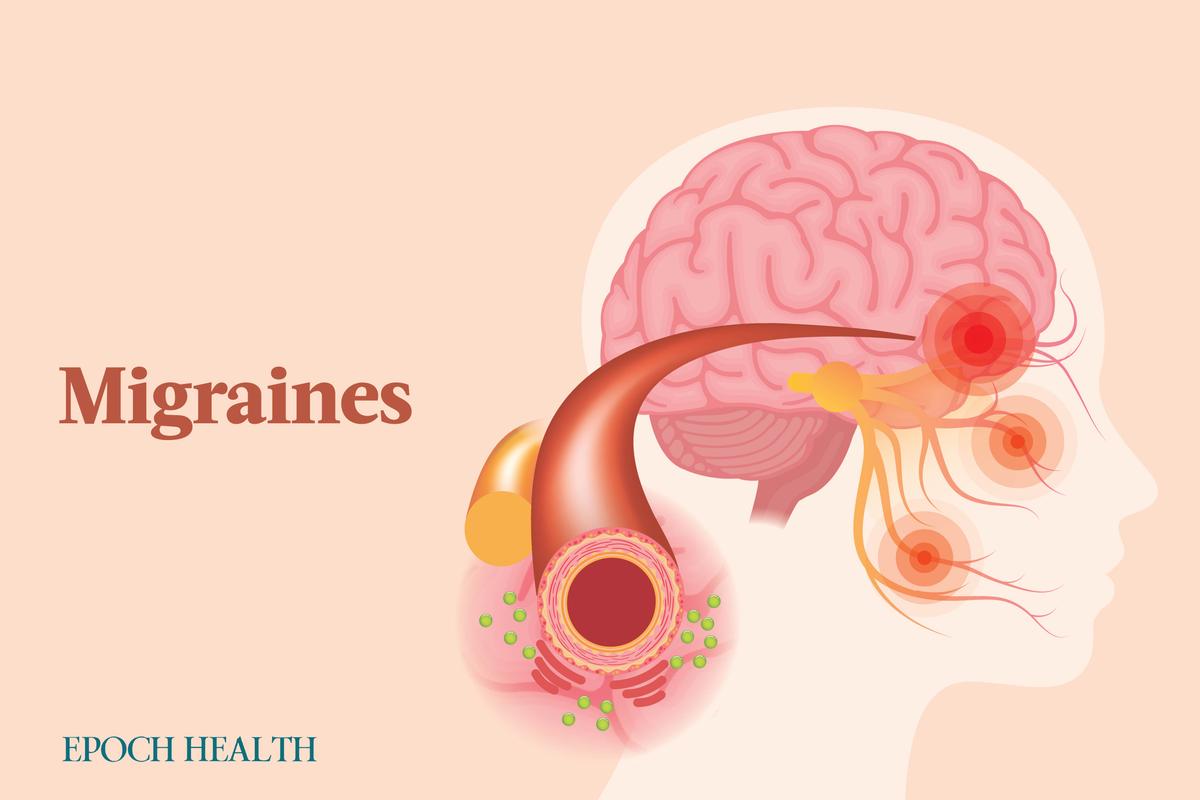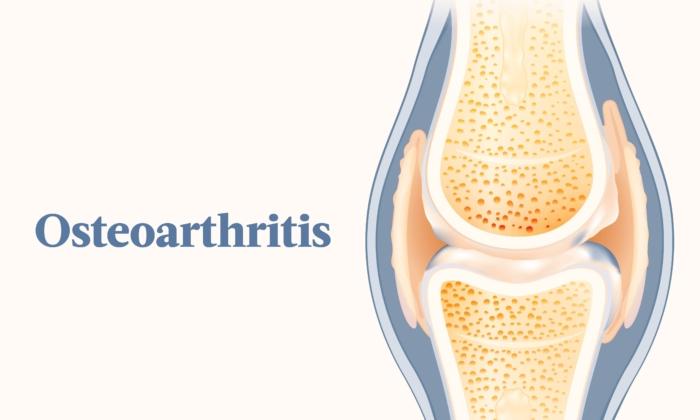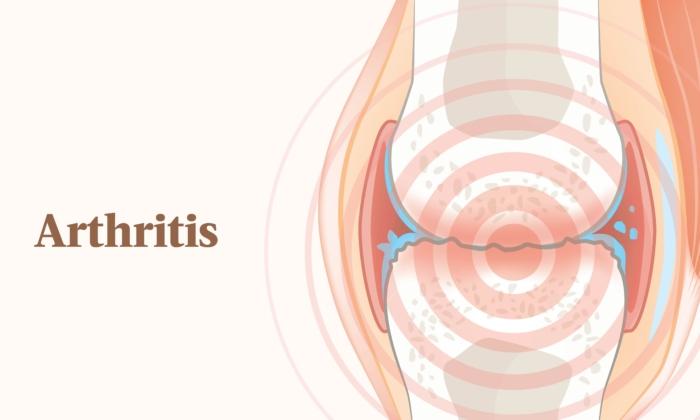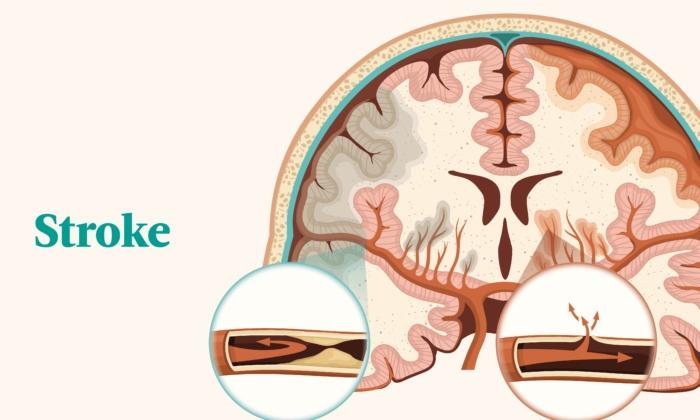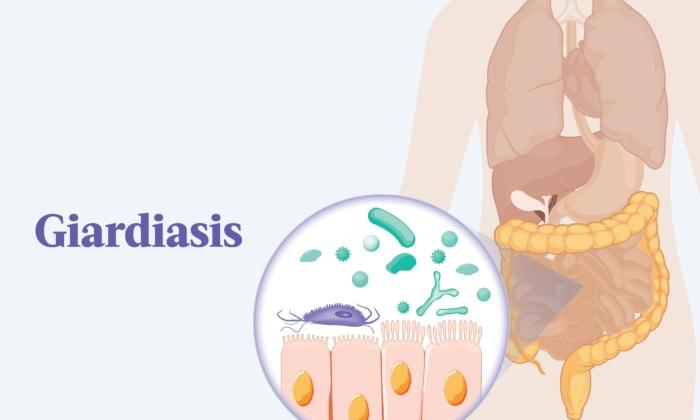Migraines are a type of recurring headache that can be debilitating. Moderate to severely painful, their symptoms can vary as much as the pain. While migraines share similarities with other types of headaches, health care professionals can distinguish migraine headaches from other types.
What Are the Common Types of Migraines?
According to Cleveland Clinic, more than 150 types of headaches are divided into two groups: primary and secondary.Without Aura (Common)
When the aura phase of a migraine does not occur, it is considered a migraine without aura. Some characteristics of this type of migraine are:- Pain on one side of the head
- Throbbing pain
- Moderate to severe intensity
- Sensitivity to light
- Nausea
- Vomiting
With Aura (Complicated)
Migraines that contain the aura stage are migraines with aura. About 15 to 20 percent of people who have migraines will experience an aura. Auras can happen before you experience a migraine or during the migraine.- Visual disturbances, such as shapes or colors, that can last for minutes or hours
- Numbness in the arms and legs, which can be gradual
- Vertigo
Chronic
Chronic means long-lasting. In this case, a chronic migraine lasts more than 15 days per month for over three months.People who experience chronic migraines may switch between chronic and episodic migraines, and those who experience episodic may switch to having chronic migraines.
Other
Less common types of migraines include:- “Silent” migraine: This is a type of headache with auras but without pain.
- Hemiplegic migraine: This migraine features momentary paralysis or sensory changes on one side of the body. This can be confused with stroke symptoms.
- Ocular migraine: Ocular migraines cause some or complete vision loss in one eye and pain behind the affected eye.
- Migraine with brainstem aura: This migraine results in sudden symptoms of loss of balance, impaired speech, and double vision.
- Abdominal migraine: According to the National Institute of Neurological Disorders and Stroke, this is abdominal pain that occurs most often in children, lasts one to 72 hours, and may or may not have a headache. They cause severe abdominal pain with nausea, vomiting, and loss of appetite. Young children are more inclined to experience these and will likely experience migraines when they are older.
- Basilar-type migraine: Occurs most often in teenage girls and is sometimes associated with menstruation, according to the National Institute of Neurological Disorders and Stroke. Symptoms include vision, speech, balance disturbances, and poor muscle coordination.
- Menstrual migraine: According to the National Institute of Neurological Disorders and Stroke, these affect women and occur around menstruation.
- Status migrainosus: This rare migraine lasts more than 72 hours with extreme pain and nausea.
What Are the Symptoms of Migraines?
Symptoms of migraine headaches can differ among the types of migraines. The most common symptoms (pdf) include:- Throbbing head pain
- Nausea
- Vomiting
- Light sensitivity
- Visual disturbances
- Headache that worsens with activity
- Disruptions in smell, taste, and touch
When to See a Doctor
If you are experiencing headaches, it is always best to see your health care provider to be diagnosed and eliminate any contributing conditions. According to Mayo Clinic, if you are experiencing any of these symptoms, see your health care provider soon, as a more severe condition may exist:- An abrupt, intense headache
- Physical changes including fever, stiff neck, numbness, weakness
- Confusion, seizures, or changes in vision
- Headache occurring after a head injury like a concussion
- A chronic headache worsened by straining, coughing, or exertion
- Changes in your headaches after the age of 50
Migraines Affect People Differently
Migraines do not affect everyone the same. How a person experiences migraines can be affected by age, gender, and physiology.Older People
Older people more often have migraine aura without headache and more secondary headaches because of existing comorbidities and adverse events. Migraine symptoms change with age, as well. Older people are less likely to have nausea and vomiting but more likely to have neck pain. When people over 55 experience migraines, considering their comorbidities and medications is necessary to make a diagnosis.Children
For children experiencing migraines, bed rest may be enough to manage the migraine. Their attacks are often shorter, less pulsating, with prominent gastrointestinal disturbances. Children who experience migraines may see an increase in prevalence when they reach adolescence.As mentioned above, children may experience two types of migraines not shared by others: basilar-type and abdominal migraines.
Women
Due to various hormonal changes, women may experience migraines during menstruation, pregnancy, postpartum, menopause, and when taking oral contraceptives.- Topiramate
- Candesartan
- Sodium valproate
What Causes a Migraine?
According to the American Medical Association (AMA), the exact cause of migraine headaches has yet to be confirmed. However, specific neurological issues are believed to contribute to migraines.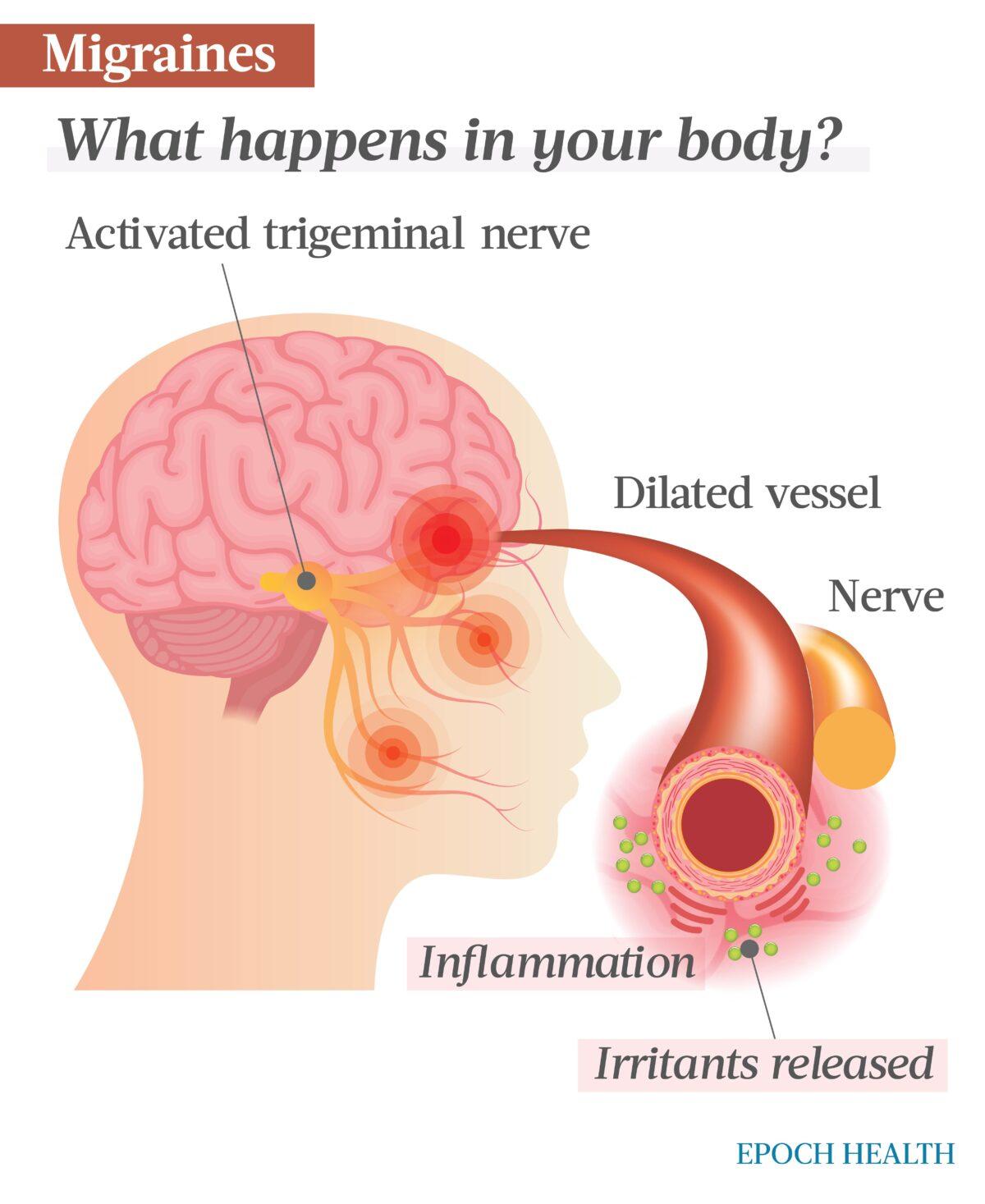
- Subarachnoid hemorrhage: Potentially life-threatening, this causes a thunderclap headache.
- Transient ischemic attack (TIA): This results in an unusual aura.
- Meningitis: Potentially life-threatening, meningitis may be present when an unexplained fever accompanies a migraine.
- Intracranial lesion: This lesion may be indicated with a progressive migraine.
- Medication overuse: This results from the overuse of acute medications used for migraine relief.
Common Migraine Triggers
Triggers do not cause migraines. Instead, they activate the processes that cause migraines. When exposed to triggers, people prone to migraines may experience one soon after exposure. Not every trigger affects everyone prone to migraines, nor will everyone prone to migraines experience the same trigger. Possible triggers include:- Barometric pressure changes
- Changes in altitude
- Tiredness
- Changes in sleep patterns
- Perfumes
- Smoke
- Skipping meals
- Changes in estrogen levels
- Diet
- Dehydration
- Loud noises
- Some medications
What Are the Stages of a Migraine?
A migraine has four stages, which Cleveland Clinic depicts in a helpful graphic:- Prodrome
- Aura
- Attack
- Postdrome
Prodrome
Before a migraine occurs, even days before, you may experience changes to your body and personality. These can be warnings of an impending migraine and can include:- Gastrointestinal disruptions
- Mood disruptions
- Food cravings
- Stiff neck
- Frequent urination
- Fluid retention
- Yawning
Aura
Auras may or may not occur with a migraine. When they do occur, they can happen before or during the migraine. An aura may include:- Visual disturbances
- Tinnitus
- A sensation of pins and needles in the arms and legs
- Numbness on one side of the face
- Speech disturbances
Attack
The attack is an active migraine. During this stage, you may experience any previously discussed symptoms, which may last for hours up to several days.Postdrome
Symptoms occurring after the attack comprise the migraine’s postdrome, or final phase. These may include:- Feeling drained
- Confusion
- Exhaustion
- Euphoria
Who Is More Likely to Develop Migraines?
UC Berkeley states that migraines typically occur in people between 15 and 55. Women are three times more likely to experience migraines than men, and 70 to 80 percent of sufferers are likely to have a family history of migraines.How Are Migraines Diagnosed?
While health care providers can diagnose migraines, it is best to prepare for your appointment first to make the diagnosis process easier. Prepare by keeping a headache journal, documenting your history of migraines in a calendar, and recording any family history of migraines. When documenting your headaches, include intensity, frequency, and duration.Health care providers depend on a patient’s history of headaches and family history to diagnose a headache condition. The age you began experiencing the headaches and whether you have an aura can help determine if the headaches are migraines.
Tests
The primary tool for diagnosing migraines is the patient’s headache history. Migraines are a clinical diagnosis, so there are no tests explicitly used to diagnose them.What Are the Complications of Migraines?
Certain auras may also indicate migraine complications. An aura that persists for over a week but shows no signs of infarction is a persistent aura without infarction. On the other hand, a migrainous infarction is a condition in which a migraine lasts longer than one hour and shows correlating areas of infarction on CT scans or an MRI and would be associated with stroke symptoms. This is in contrast to the temporary, though often prolonged, one-side weakness seen in hemiplegic migraine that does not ultimately result in stroke. An emergent medical evaluation is needed to determine the difference.- Depression and anxiety: People with migraines are five times more likely to develop depression than those who don’t.
- Vertigo: Migraines can cause one to feel dizzy, like their surroundings are spinning, or like they can’t balance properly.
- Insomnia: The persistent and intense pain of migraines can disrupt one’s sleep.
- Serotonin syndrome: Triptans, migraine medication, can interact with some antidepressants and cause a buildup of serotonin, which can be life-threatening.
- Stomach problems: The constant use of over-the-counter (OTC) NSAIDS to relieve migraine symptoms can lead to stomach problems, such as ulcers or bleeding.
- Rebound headaches: Also known as medication overuse headaches, these result from overusing medications used to treat migraines.
What Are the Treatments for Migraines?
There is no cure for migraines. Treatments for migraines help ease the symptoms, shorten the duration, or prevent frequent attacks. The most common treatments are medication and lifestyle changes.Different kinds of medications may stop a migraine attack or its symptoms. Some medications quiet sensitive nerves and reduce inflammation.
Treating migraines is personal. Not every medication will produce the same results for every person. It is up to the health care provider and the patient to discover the best medications for the patient’s symptoms.
Medications for migraines can be OTC or prescription drugs.
Common Medications
According to the Nature Reviews Neurology paper, several medications are commonly used to treat migraines. Three lines of treatment divide these medications.- Sumatriptan
- Zolmitriptan
- Naratriptan
How Does Mindset Affect Migraines?
Stress is a known trigger for migraines. Those under extreme stress or unable to manage stress may experience migraines. The experience of the migraine itself may cause emotional distress and suffering.What Are the Natural Approaches to Migraines?
While there are claims that some natural remedies may help manage migraines, the evidence is lacking. More research is required, but there are a few promising options.Riboflavin
Riboflavin, or vitamin B2, has been studied as a measure to decrease the frequency of migraines. Data are sufficient enough that the American Academy of Neurology and the American Headache Society believe riboflavin effectively prevents migraines.Feverfew
Feverfew is another natural remedy thought to prevent migraines. Though the data supporting this are lacking, preliminary studies are encouraging. Further research is needed to support the preliminary findings.When using feverfew to prevent migraines, take it once daily for one month. If there is a decline in migraine attacks, your health care provider may slowly decrease the dose. Again, consult your primary health care provider before using natural remedies.
Magnesium
The American Headache Society and the American Academy of Neurology suggest magnesium may prevent migraines.Butterbur
Butterbur may reduce the frequency of migraines in adults and children, according to the National Center for Complementary and Integrative Health (NCCIH). However, its safety is uncertain.Some butterbur products contain pyrrolizidine alkaloids (PA), which may harm the liver, lungs, and blood circulation and cause cancer. Though some butterbur products claim to be PA-free, some question these claims.
Coenzyme Q10
The NCCIH also says that coenzyme Q10 shows promising preliminary data suggesting it decreases the number of migraine attacks in one month. Although it appears to have minimal risks, further research is needed.Ginger
Using ginger does not prevent migraines. However, it may minimize pain and reduce nausea. As such, it may be good to use ginger when these symptoms are present with a migraine.Coping and Support
While migraine prevention is possible, there remains no cure. People who experience migraines may learn to cope with the condition and seek support from health care professionals, family, and friends.- Resting in a dark, quiet room.
- Altogether avoiding exposure to screens, including cellphones.
- Applying a cold compress.
- Getting a scalp massage.
- Practicing tai chi and yoga.
- Practicing meditation.
- Acupuncture.
- Chiropractic treatment.
- Biofeedback therapy.
How Can I Prevent Migraines?
Preventing migraines is not always possible, but medications and lifestyle changes can reduce their occurrence.First-Line
Beta blockers, anticonvulsives, and angiotensin II receptor blockers (ARBs) are classifications of drugs used in the first-line prevention of migraines. These medications include:- Topiramate
- Candesartan
- Atenolol
- Metoprolol
- Bisoprolol
- Propranolol
Second-Line
Anticonvulsants are also a classification used for second-line prevention of migraines, but the specific drug used is not the same as that in the first-line prevention medications. Along with anticonvulsants are antidepressants and calcium antagonist drug classes. Also taken daily, second-line prevention medications include:- Sodium valproate
- Amitriptyline
- Flunarizine
Third-Line
Third-line migraine prevention medications are the last resort for decreasing migraine occurrence. This group has two classes of drugs: botulinum toxin and calcitonin gene-related peptide (CGRP) monoclonal antibodies. Medications from these two classes used for migraine prevention are:- OnabotulinumtoxinA
- Erenumab
- Fremanezumab
- Galcanezumab
- Eptinezumab
Evaluating these medications’ efficacy should occur three to nine months after starting the medication. For this reason, consistency with dosing is essential. Inconsistency can negatively impact the drug’s effectiveness.
Lifestyle Factors
One way to manage living with migraines is to make lifestyle changes. Adjusting your lifestyle does not guarantee the frequency of migraines will decrease. Some adjustments may help, while others may not.- Significantly decreasing screen time
- Practicing relaxation techniques
- Getting massages
- Hydrating
- Keeping consistent sleep patterns
- Exercising
- Eating regularly
- Improving posture
- Managing stress

